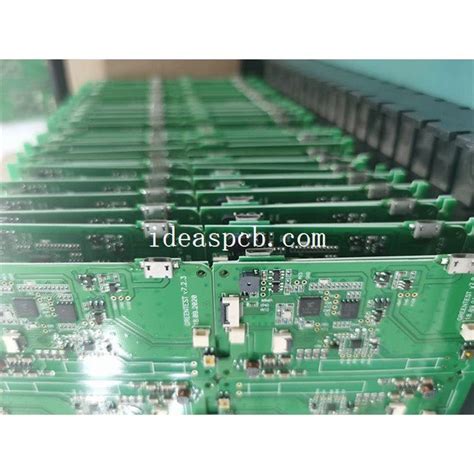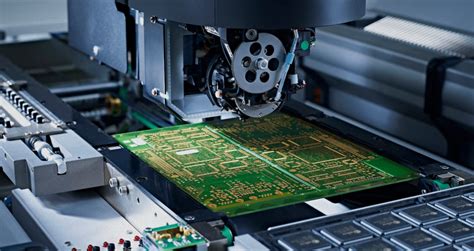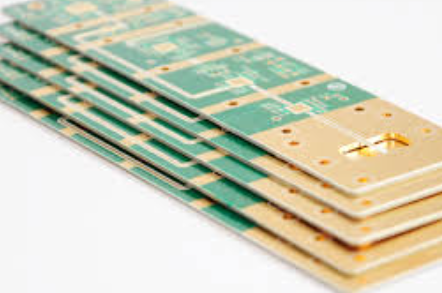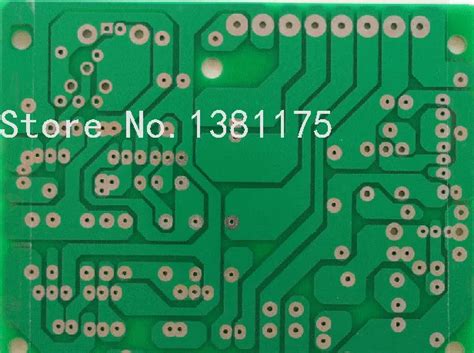Experience Sharing in Designing AC/DC Power Supply PCB
AC/DC power supplies, also known as AC/DC converters, are an important component of many electronic applications, including consumer electronics, industrial, robotics, medical and military applications.
The current trend towards lower power supply voltages (especially for highly integrated digital devices), smaller footprints, lighter weight and higher efficiency requires precise design of power supply circuits starting with the PCB.
Today, it is common for electronic applications to require five or more independent power rails with different electrical characteristics and performance. These requirements complicate the design of power supplies, which are the first component of electronic equipment and on which their correct operation, reliability and lifespan depend.
This article will discuss the main issues that engineers face when designing AC/DC power supply PCBs, such as signal integrity, power line integrity, electromagnetic interference, output voltage stability and thermal management. By following some simple guidelines presented in this article, designers will be able to anticipate these types of issues and prevent them from negatively affecting PCB designs.

Types of AC/DC Power Supplies
When designers choose the best AC/DC power supply for their project requirements, there are different key factors to consider, including:
· Type (custom or integrated): design based on discrete components only or integrated regulator/converter (IC)
· Technology: linear or switching
· Electrical characteristics: input voltage range, output voltage type (fixed or variable, single or multiple outputs), output power, efficiency, etc.
· Mechanical characteristics: open or closed, size, weight, cooling system, etc.
Regarding the first point, we can say that in many cases, the best solution is to use an integrated device, which has several advantages, including: simplifying the project, reducing BOM and time to market, and providing integrated protection and diagnostic functions. However, for some high-power, RF or niche applications, a design based on discrete power devices only may be required.
In terms of the technology used, the choice of linear power supply or switching power supply (also known as SMPS, short for Switched Mode Power Supply) depends on the requirements of the specific application.
Linear can be considered as the oldest but not outdated conversion technology.
Despite some drawbacks of linear AC/DC power supplies, such as limited efficiency and the resulting power loss in the form of heat, it is successfully used in applications that require high reliability, low noise, fast recovery and reaction time, and negligible radiated emissions.
An important category of linear power supplies is the LDO (low dropout) regulator.
If the efficiency of an LDO is to be maximized, the difference between the input voltage and the regulated output voltage must be minimized. In addition, it is best to choose a regulator with low thermal resistance to prevent it from overheating above the optimal operating temperature.
Switching power supplies have become the reference standard for the conversion of AC voltage to DC voltage.
This conversion is nonlinear and usually operates in a closed loop, i.e. a feedback signal is used to maintain regulation. Although switching regulators are preferred from the point of view of efficiency and regulation quality, their design can be complex because it involves multiple devices, some of which have large passive components (inductors and capacitors) that can create noise problems if not placed correctly.
Although SMPS power supplies require a more complex design, they guarantee very high efficiency, exceeding the best linear power supplies. This allows for better thermal management. However, components switching at high frequencies generate a lot of electromagnetic noise. This EMI can affect the quality of electrical signals and can even cause some components to malfunction or even be damaged. Therefore, linear technology is often the first choice for electronic medical applications and laboratory instruments.

Layout and wiring
In AC/DC power supply PCBs, layout plays a vital role, as it directly affects immunity to electromagnetic interference, signal and power integrity, power efficiency, thermal management, and the reliability of the same equipment.
In addition, a good layout improves power conversion efficiency, moves heat away from the hottest components, and reduces noise levels. In this sense, the proper size of the conductive traces is a key factor that reduces the heat generated and improves the reliability of the PCB under any load conditions. Improper layout may cause problems at high currents or when there is a large difference between input and output voltages.
Some simple but effective routing rules are as follows:
· To connect power devices, use traces that are as short and straight as possible
· Avoid inserting curves or sharp edges within traces, as they concentrate the electric field at specific points of the PCB
· Traces with large voltage differences must be separated appropriately
· Avoid placing high-voltage traces on the innermost layers of the PCB. In addition, on the innermost layers, it is better to increase the distance between traces
· Keep traces carrying sensitive or high data rate signals away from power traces and regulators, especially switch-type traces
· In multi-layer PCBs, traces with sensitive signals must be placed on layers separated from the layers containing power lines by a (possibly solid) ground layer
· To avoid signal coupling (which may cause noise or interference), signal traces should not be laid parallel to power lines, and power lines should be laid on different layers. If possible, signal traces should cross power traces at a 90° angle to reduce the effects of noise coupling (see Figure 2)
· Place high-current traces on the outermost layers.
If this is not possible, use vias to connect multiple layers together. For higher currents, multiple vias may be required. Note that a 14 mil diameter via allows up to 2A of current, and a 40 mil diameter or larger via allows up to 5A of current.
For ground planes, use solid, uninterrupted areas or large polygons.
Such areas provide a low impedance path capable of dissipating noise and handling high return currents. In addition, they provide a path to dissipate heat away from critical components. Placing ground planes on both sides helps absorb radiated EMI and reduce ground loop noise and errors.
Electromagnetic Interference
AC/DC converters must be designed to meet strict safety and electromagnetic interference regulations. In this regard, it may be necessary to insert appropriate EMI filters that meet the requirements of the standards.
Some possible measures are as follows:
· Perform initial tests (without adding any filters) to evaluate the impact of EMI generation
· Identify the frequencies that create the most problems
· Take action on the routing of traces to keep power lines and sensitive signals as far apart as possible
· Eliminate ground loops
· As a last resort, design an external filter by adding an inductive component in series with the AC input of the AC/DC power supply.
The PCB stackup of a PCB, determined by the configuration and arrangement of the layers inside the PCB, is a key factor in determining the EMC performance of the board. In fact, a well-designed stackup reduces the radiation emitted by closed paths (differential mode radiation) as well as the radiation generated by the cables connected to them (common mode radiation).
In order to provide adequate electromagnetic shielding and improve immunity to noise and crosstalk, it is best to introduce at least one solid ground layer in the PCB stackup if the available space allows. If it is not possible to keep the entire layer due to space constraints, the minimum area covering the entire surface of the PCB power components can be limited to a minimum.
Component Placement
The first components to be placed on the PCB are those that carry high currents, so they require the widest traces.
The components that make up the power supply PCB should be placed as close to each other as possible and should be positioned appropriately to reduce trace lengths, keeping in mind that the associated traces must be as short as possible.
Due to trace length limitations, the IC converter must also be placed as close as possible to the device it is supplying the power line to.
Heat dissipation must also be considered when placing components, with priority given to locations where adequate and optimal heat dissipation of the power supply device is possible. It is recommended to start with the important parts of the power supply, such as the converter IC, and then place them down to the input capacitors and inductors, and then the output capacitors.
The loops through which high switching currents pass (i.e., loops with high di/dt values) must be as narrow and compact as possible to reduce distributed inductance that can cause voltage spikes. A good rule of thumb is to have current distribution and return paths overlap or be adjacent to each other to minimize the loop area formed and reduce the generation of EMI.
Analog control components should be placed last, as they save space and require thinner traces. One way to handle them is to create subgroups by function and then link them by group.
All large components, such as MOSFETs, rectifiers, electrolytic capacitors, inductors, and connectors, must be placed on the top side of the board to avoid falling or moving during soldering. The bottom side of the board must contain only the smallest components, which are attached to the board by surface tension and do not move during the machine soldering operation.
Bypass capacitors, also known as decoupling capacitors, are used to protect the most delicate components, such as ICs and logic devices, where slight oscillations can be mistaken for changes in logic states. These capacitors must be connected to ground and as close to the power ports of the IC as possible.
Heat Dissipation
Since all power circuits generate heat, the design of power PCBs usually needs to have proper thermal management features. The first rule to follow is to keep the connections as short and direct as possible, while separating heat-generating components (IC regulators, MOSFETs, etc.) from heat-sensitive components.
Then, given the high thermal conductivity of this metal, we might consider using copper areas more extensively to provide heat dissipation areas. These copper sections will help distribute the heat more evenly, moving it from hot spots to locations with better heat transfer, ultimately achieving better heat dissipation.
Using thermal vias and solid copper areas underneath the hottest components is another effective way to quickly move heat away from these components. The goal is to prevent hot spots from forming on the board and allow the heat to dissipate quickly without damaging the most critical components.
If the layout is not sufficient to ensure good thermal management, it is possible to use heat sinks on the power supply components and eventually introduce active cooling solutions such as forced air. These options are entirely application dependent, keeping in mind that in some cases, fanless power supplies are often preferred for reliability and noise control reasons.







